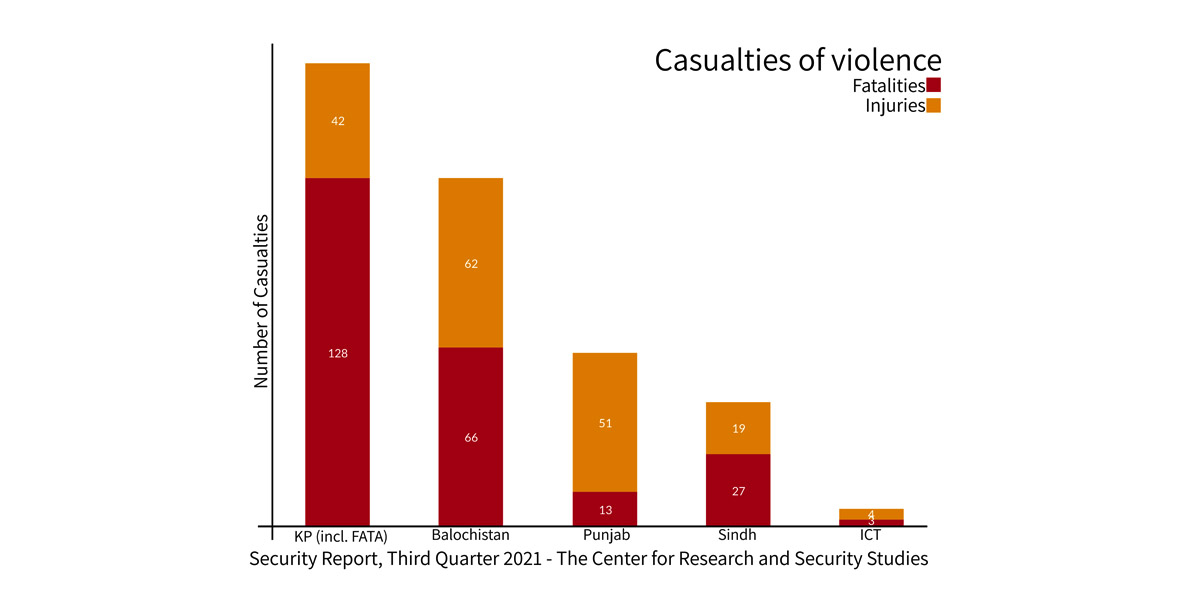July 1, 2021 to September 30, 2021
by Senior Research Fellow M. Nafees
Casualties from violence in Pakistan
During the third quarter (Q3) in 2021, an uptick was observed in fatalities from violence with the loss of 237 persons as opposed to 203 for the last quarter. KP province, once again, recorded the highest number of fatalities from violence in the country and the majority of the victims hailed from the erstwhile FATA region – an apparent fallout of the Taliban’s victory in Afghanistan. Balochistan, another province bordering Afghanistan, remained the second most affected by violence with loss of 66 persons during Q3. These were followed by fatalities in Punjab, Sindh, and Islamabad (table 1).
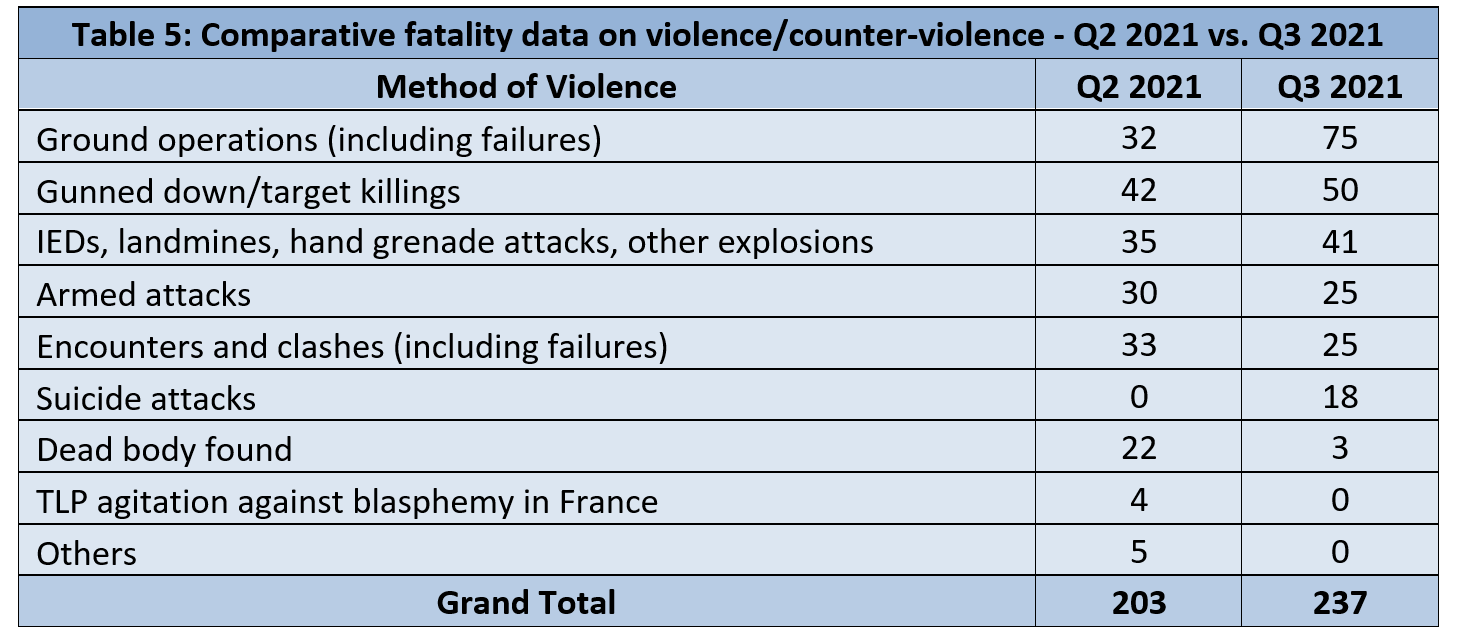
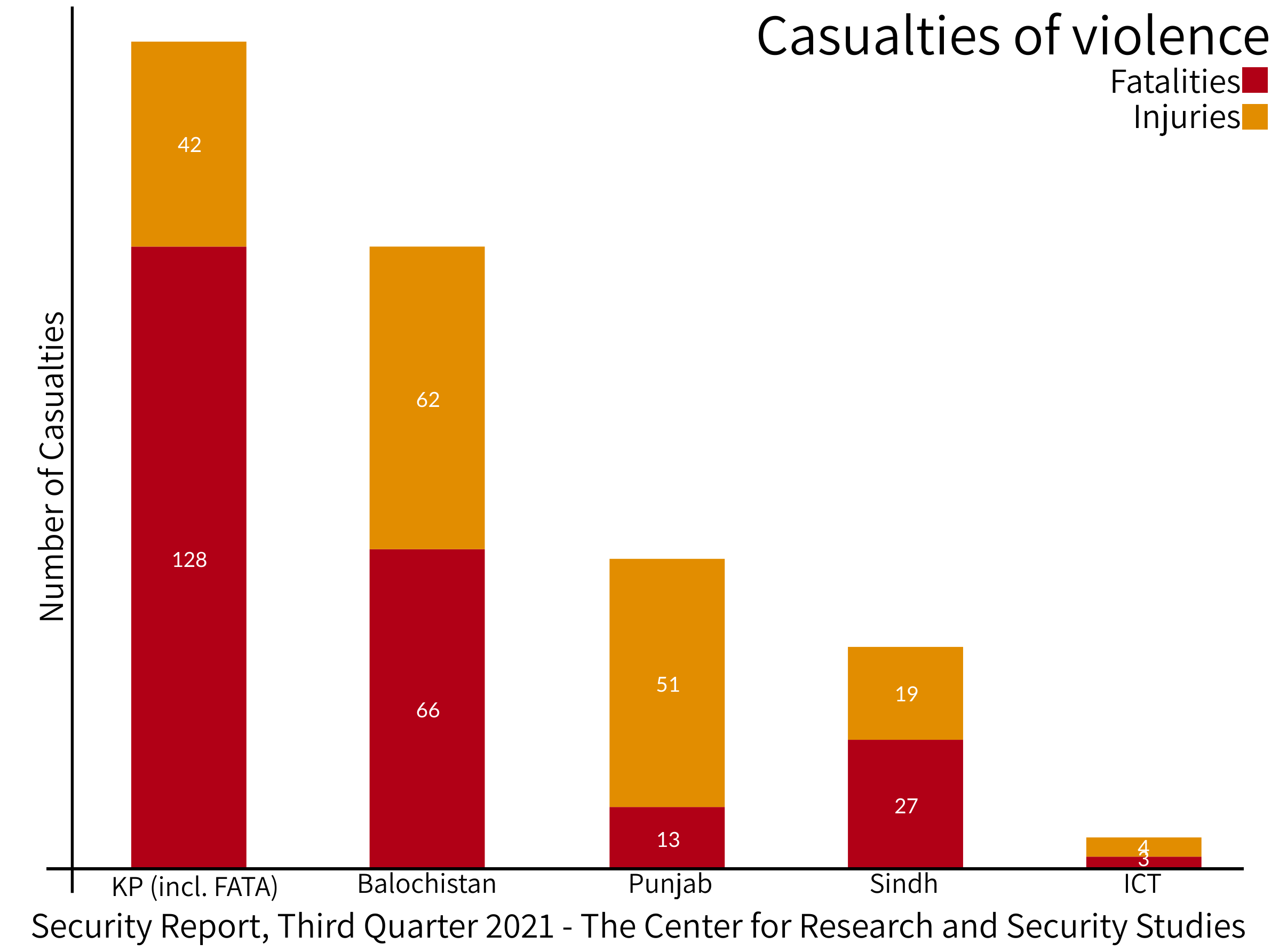
Despite a near constant decline since 2016, 2021 has witnessed a slight rise in violence-related fatalities, which continued into this quarter. There was 4% rise in Q1, followed by a 3% rise in Q2, and there is a 17% rise now. KP (including ex. FATA) witnessed a sharp rise in violence during Q3 compared to Q2 figures. More than 50% of all fatalities from violence in the country were reported from this region alone.
Balochistan remained the second most highly affected in the country, though the number of fatalities took a small dip in Q3 (66) compared to Q2 (74). More than 80% of the total fatalities in Q3 took place in these two regions, bordering Afghanistan. Sindh recorded a marginal surge in fatalities while Punjab and Islamabad witnessed a little drop in fatalities this quarter (table 2).
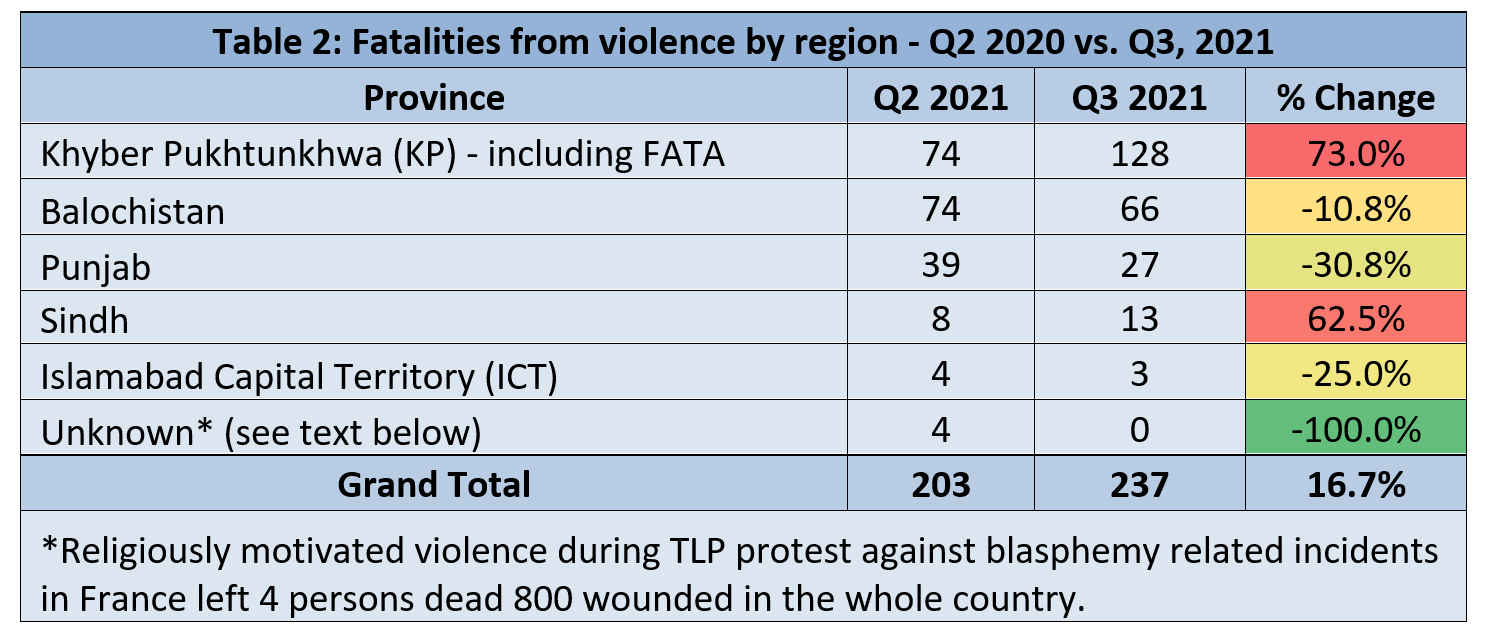
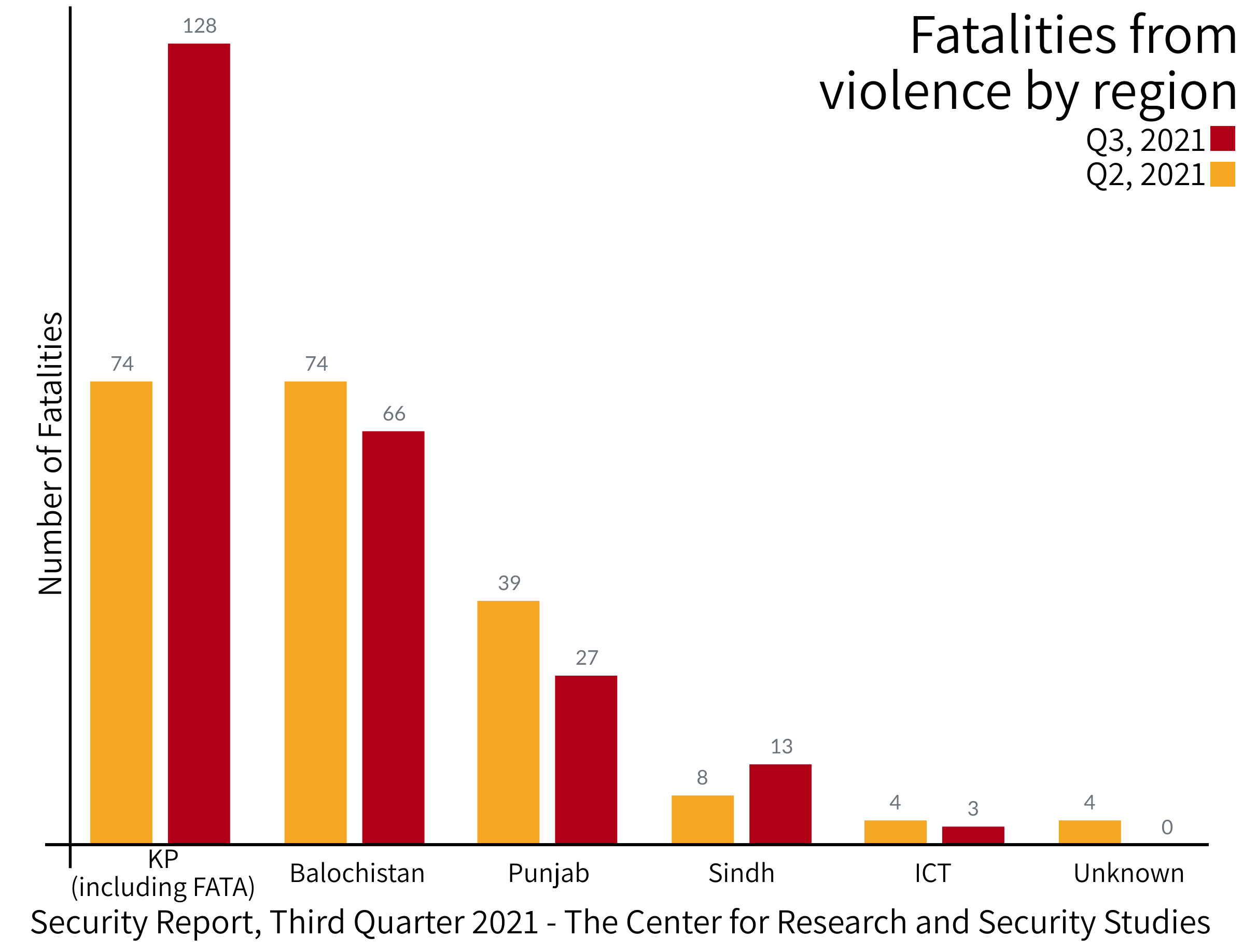
The violence took a sharp rise in August and declined by roughly the same amount in the following month of September (table 03). Coincidentally, August 15 was also when the Taliban declared victory in Afghanistan, and the Tehrik-e-Taliban Pakistan (TTP) stepped up its attacks in Pakistan.

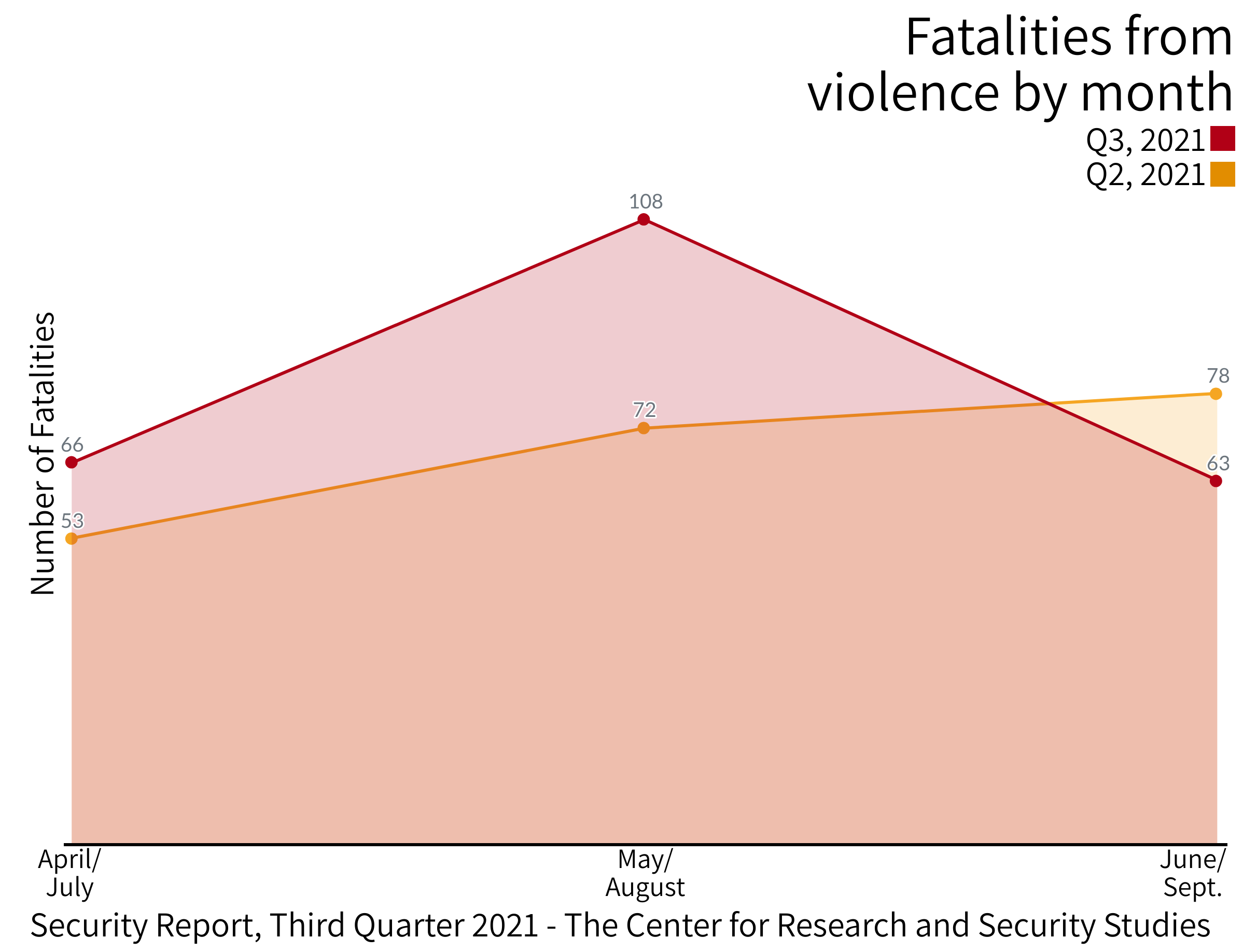
District level violence
North and South Waziristan ranked the highest in violence-related-fatalities among all districts having recorded greater number of fatalities from violence. Both of these regions witnessed security operations, cross border attacks, terror attacks (use of explosives and armed attacks) and target killings. Most of these attacks were carried out by militants living in the country and Afghanistan. Karachi, Quetta, Mastung, Kohistan, and Bajaur also had double digit fatalities. Major causes of violence in these districts, barring Mastung, were acts of terrorism like use of explosives, suicide attacks, and target killings. In Mastung, twelve militants were killed during security operations.


Methods of violence
The intelligence-based ground operations resulted in a high number of militant fatalities. Target killings appeared as the second major cause of fatalities in the country, followed by explosive attacks, armed attacks, and encounters/clashes. For the first time in 2021, three suicide attacks were carried out, two of them targeted Chinese officials and one was against the security forces in KP and Balochistan.
Unfortunately, four ground operations partially failed costing the lives of seven security personnel. There were fifteen encounter failures as well resulting in the deaths of 15 security personnel while two encounters are suspected because of the public reactions against such operations (table 5).


Victims of violence
For the first time this year the fatalities of security forces surpassed the fatalities of civilians. Compared to last quarter’s data, a major shift has taken place in the number of victims of violence and counter-violence (table 6). Militancy in the country has taken a new direction now and began targeting security personnel and the Chinese officials who are working on multi-billion dollars projects under the China-Pakistan Economic Corridor (CPEC) banner.
With an inconceivable victory against the US and NATO forces, the Afghan Taliban and their sympathizers in Pakistan including the Tehrik-e-Taliban Pakistan (TTP) have gained a new sense of supremacy and invincibility. The government also announced that it is in peace talks with the TTP.
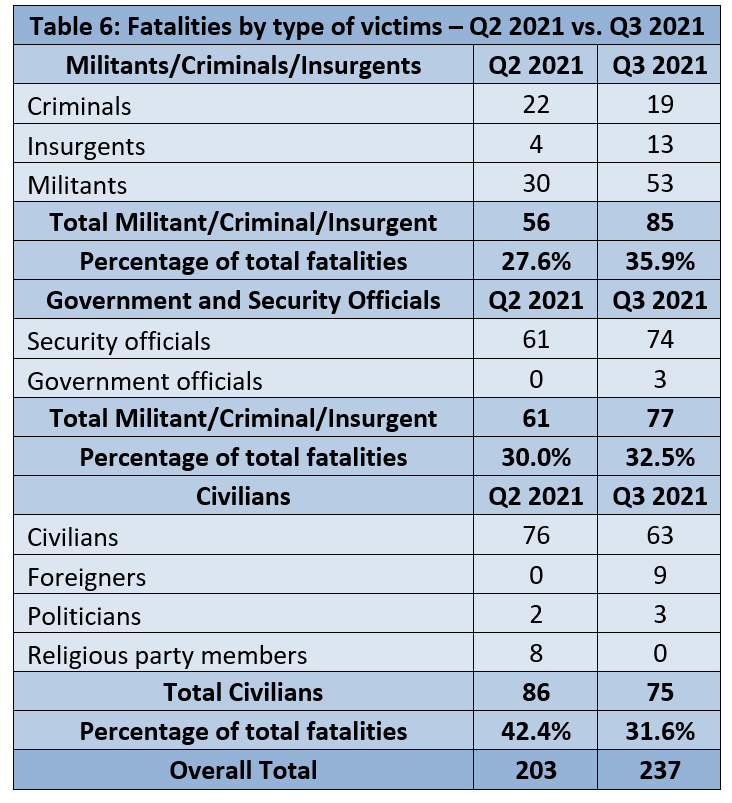
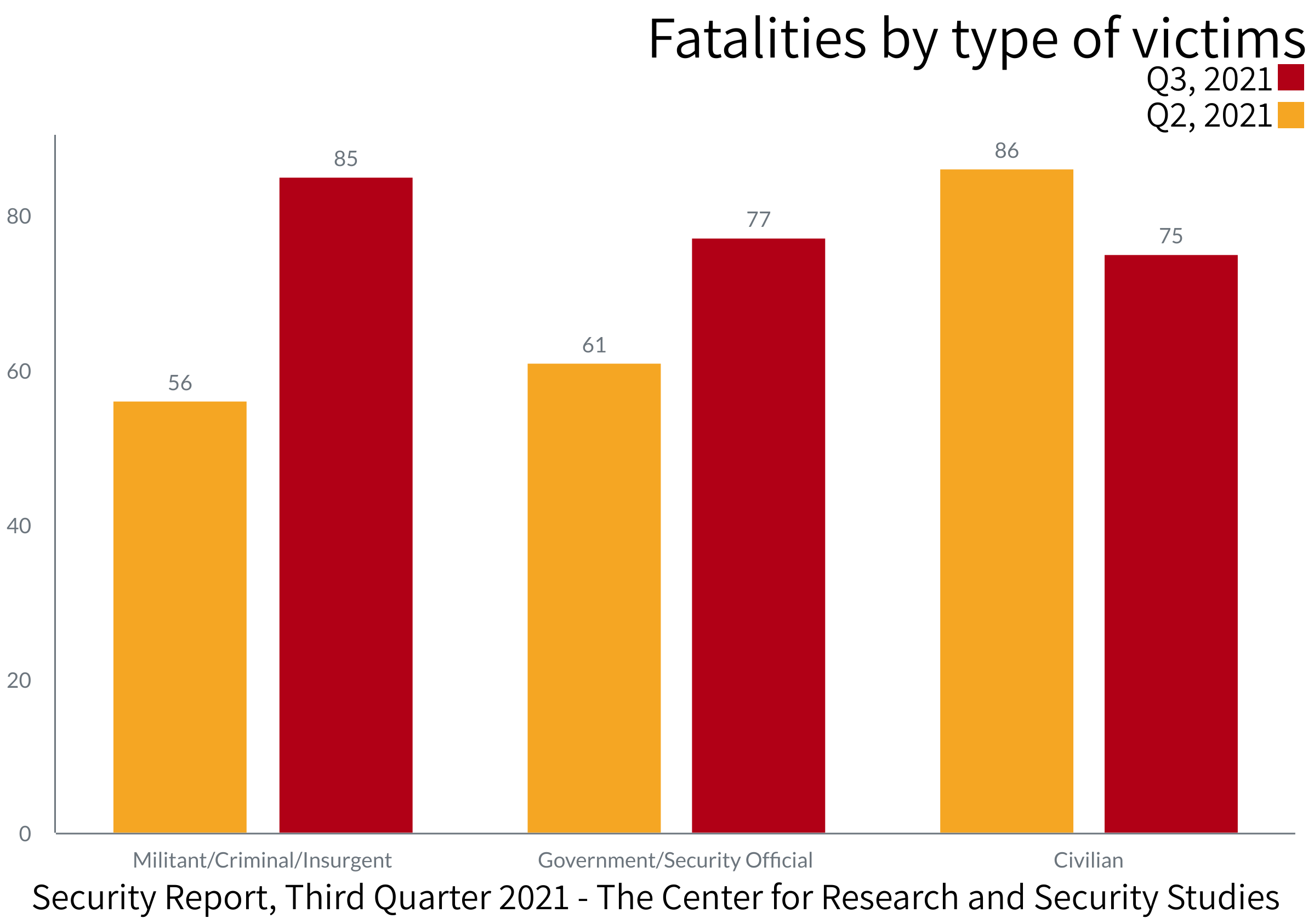
Claimants of violence
TTP has rapidly become very active in Pakistan. It claimed five terror attacks during this year that left 24 persons dead, 9 Chinese and 15 Pakistani soldiers. The bomb explosion at Serena Hotel in Quetta back in April was found to have been a failed attempt by the TTP to target the Chinese Ambassador. Last year, they had carried out four attacks killing two policemen and three civilians; they were either gunned down or killed after abduction.
The Baloch insurgent group Baloch Liberation Army (BLA), also became very active this quarter and carried out eight attacks mostly targeting security personnel. Unidentified militants are also found to have killed ten security persons during intelligence-based operations raising questions about the preparedness of the security forces for such operations. Six security personnel were killed in cross border attacks carried out by the Afghan-based militants (table 7).
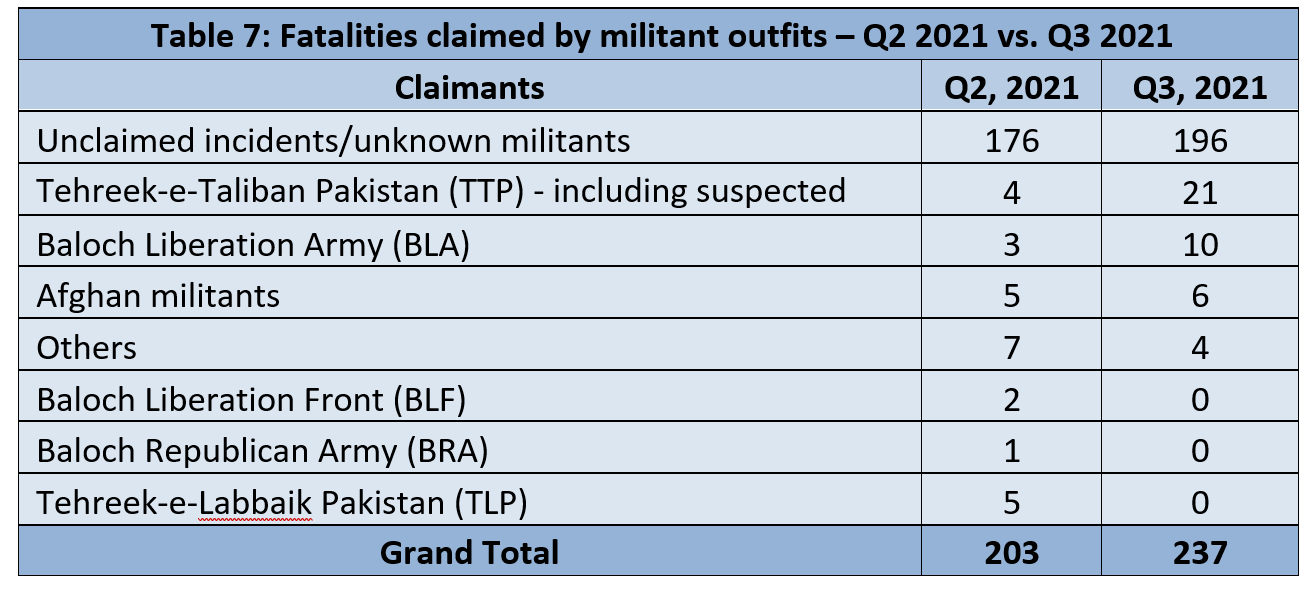
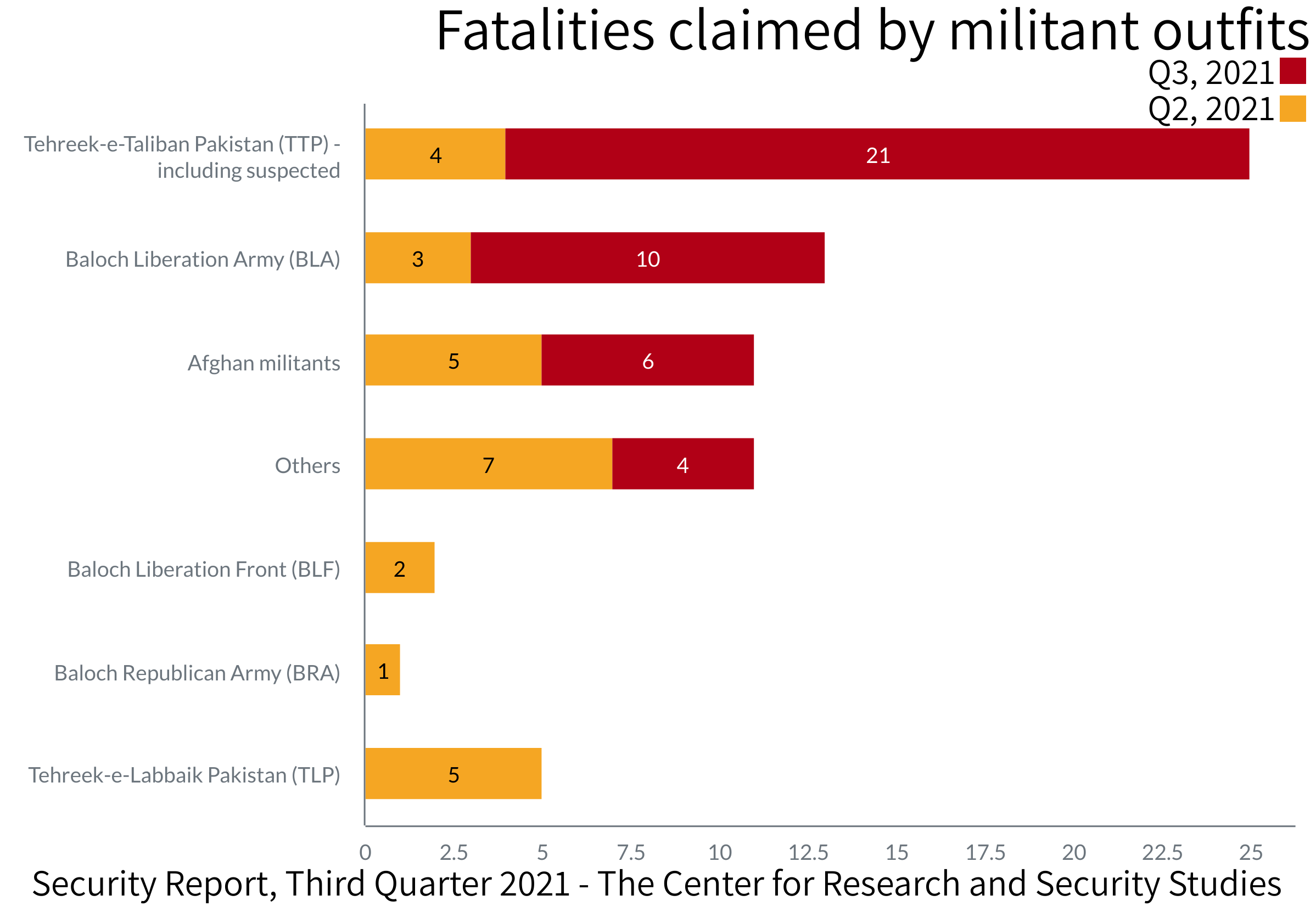
Sectarian violence
Punjab and Sindh were the two provinces affected by sectarian violence during this quarter. Compared to last quarter, sectarian violence witnessed a sudden upsurge in Punjab. No such violence was reported from the remaining regions of the country (table 8).

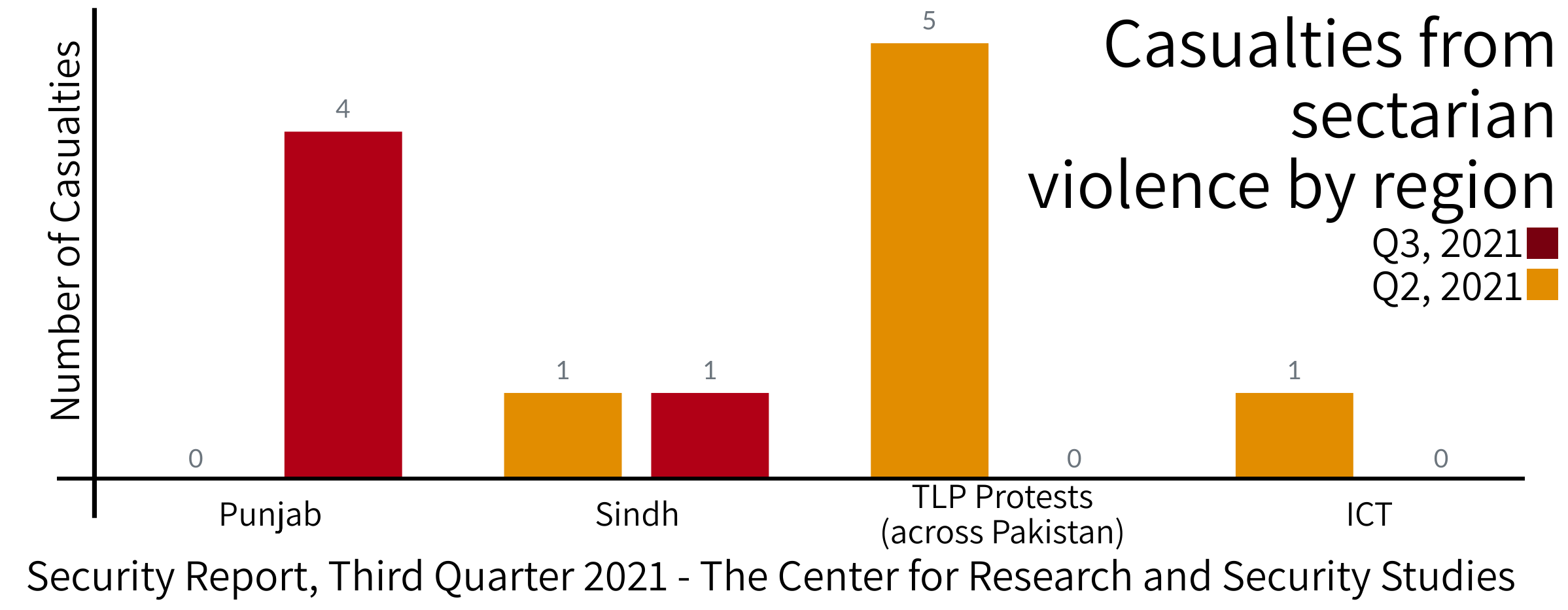
The majority of the victims of sectarian violence were from the Shia community (4 persons) and one from the Ahmadi community. In one of these acts of sectarian violence, indiscriminate firing was carried out by unknown assailants on Ispahani Road, Karachi on 19 August 2021 leaving one person dead and three injured.
On 20 August 2021, a bomb explosion targeted an Ashura procession in Bahawalnagar that left 3 persons dead and 50 wounded. On 3 September 2021, a British-Pakistani national belonging to Ahmadi community was gunned down by unknown gunmen near Nankana Saheb. Although the number of fatalities from sectarian violence is less than what was experienced in the previous quarter, the growing level of hatred and intolerance is a matter of much concern (table 9).


